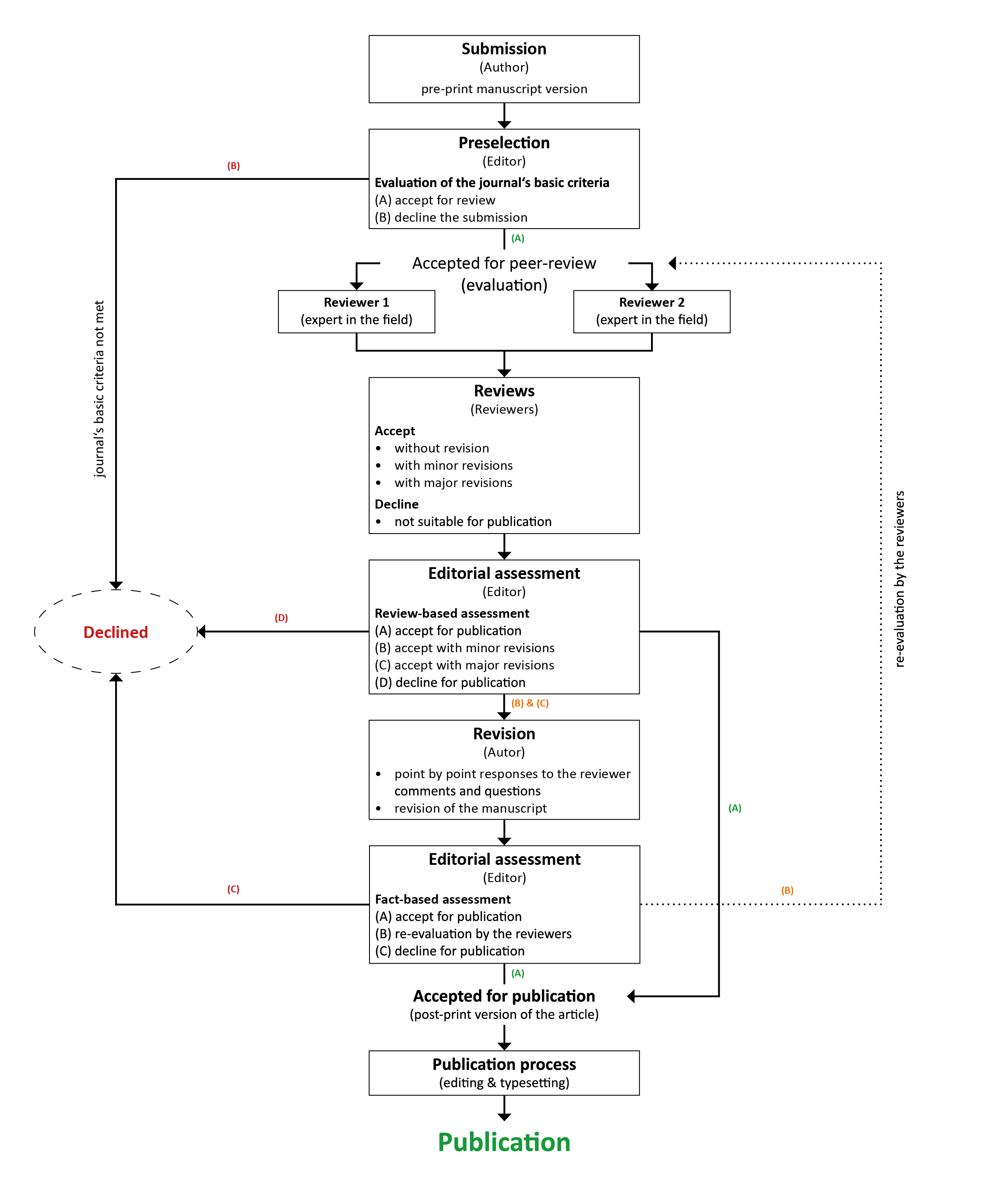
Review process
All research articles published in the journal undergo a multi-stage peer-review process to ensure the scientific and editorial quality of each article. All submissions are reviewed by an editor and at least two reviewers who are experts in the relevant field of research. The journal uses a double-blind review process for research articles. Authors and reviewers can find a discussion of the journal's ethical guidelines at this link.
Book reviews, editorials, and other occasional miscellaneous content are invited by the editors, who evaluate submissions to those sections for publication. Revisions may be required before publication.
The procedure described and illustrated below applies to all peer-reviewed sections of the journal (i.e., research articles). The editorial board aims to publish high quality articles and to develop them further with the authors during the review and editorial process. Generally, the successful publication process takes up to 6 months from submission to publication of an article. Due to publication schedules it may take longer, but we strive to avoid that.
Book reviews and miscellany are marked as non-reviewed in the published article version (PDF).
1 | Article preselection
All submissions are initially reviewed by the editorial board. The following basic criteria must be met:
• The submission fits thematically within the scope and selected section of the journal.
• The manuscript has not been previously published elsewhere.
• The journal's author guidelines have been followed.
• The article is coherent and clearly written (including language and grammar).
Articles that do not meet the basic criteria will be rejected during the article preselection process.
2 | Review
All submissions will be reviewed by at least two reviewers who are experts in the relevant field of research. The following review criteria must be met:
• Ethical guidelines: The guidelines of the journal are met.
• Relevance: Content of the article fits the journal's scope and readership.
• Research: The scientific research questions are presented clearly and understandably within the article.
• Background: The theoretical and scientific background is presented in detail and is included in the discussion.
• Methods: Scientific methods are described transparently.
• Results: Results and conclusions are clearly presented and discussed in an comprehensible way.
3 | Editorial assessment
The expert opinion-based evaluation is performed by the editorial team and leads to the following options:
➟ accept for publication
➟ accept for publication with minor revision
➟ accept for publication with significant revision
➟ declined for publication
4 | Revision
The authors have the opportunity to revise the manuscipt based on the reviews and editorial comments as well as to respond to questions and comments from the reviewers.
5 | Editorial decision
The editorial board can make a final decision directly or after consultation with the reviewers. An additional reviewer may be consulted if the first two primary reviews contradict each other. One of the following decisions is made:
➟ accept for publication
➟ re-evaluation by the previous reviewers or a new reviewer (as listed in step 2)
➟ decline for publication
Illustration of the journal's review process








